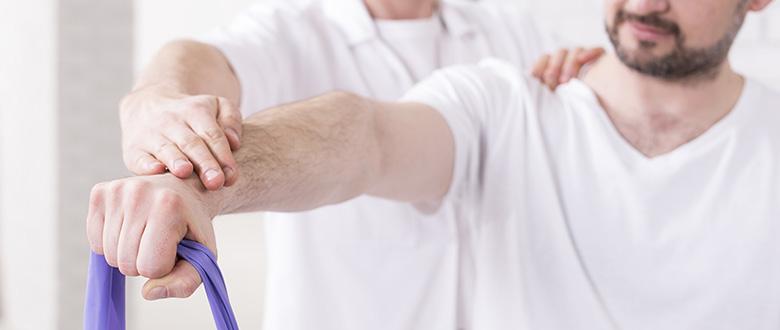Shoulder pain in older adults often appears suddenly, as if caused by a sudden trauma or injury. But for many, says Bend physical therapist Rob Hollander, shoulder injuries are often the result of musculoskeletal conditions directly associated with aging and, more specifically, weakening posture.
“Some people may think ‘I slept on it wrong’ or ‘I pulled something in my shoulder,” but the truth might point to something more long-term,’” said Hollander, co-owner at Alpine Physical Therapy in Bend. “Often the pain is related to lack of flexibility or poor movement patterns associated over time with improper postures of the neck and upper trunk”.
According the National Institutes of Health (NIH), anywhere from 44 to 65 percent of all complaints of shoulder pain can be attributed to a condition known as shoulder impingement syndrome — also known as simply “shoulder impingement.”
Shoulder impingement, says Hollander, is the result of chronic and repetitive compression of the rotator-cuff tendons in the shoulder that may cause inflammation, pain, weakness, and a decreased range of motion in the joint. Those with the greatest risk are people who perform repetitive overhead movements. With athletes and recreationalists, golfers, swimmers and racquet sport athletes see greater occurrences.
Hollander points out that changes in posture related to aging – tightness in the anterior chest coupled with the forward arching of the spine – can create conditions ideal for the development shoulder impingement.
“Over time, impingement can cause the rotator cuff to start to fray and tear,” Hollander said. “This can lead to tendinitis and even tears in the rotator cuff.”
The key to preventing shoulder impingement as you age, Hollander says, is regular mobility – moving and stretching your shoulders daily in order to stay loose and counteract the effects of declining posture. To do so, Hollander suggests adults include the following daily exercises as part of their regular regimen as they age:
Assisted Shoulder Flexion: using a golf club or ski pole, hold one arm at the top and the other at the bottom. Reach forward and up as far as what is comfortable and use the assisting hand to push into the barrier to stretch. If you have shoulder pain, reach to the point of onset, but not further. If comfortable reach into the stretch. Repeat 10x.
Upper Back Extension: Sitting in a stable chair that supports your mid back, hands clasped together behind your head, gently extend back over the chair to stretch your upper back. Make sure to protect your neck. Stop when you feel tightness or pressure in the mid back. Alternatively, you can try this same stretch lying down over a foam roll. Hold for a few seconds, relax, and then repeat 5-10x
Backward Shoulder Extensions: Standing upright, your fingers interlaced behind your back, slowly lift your arms away from your buttocks and toward the ceiling – lifting as high as you can. Keeping an upright stance, hold for a few seconds, release, then do it again. Repeat 5-10x.
Up-Back Shoulder Reaches: Reach one arm behind your back and, palm facing out, then slowly reach up the small of your back toward the space between your shoulder blades. Hold for a few seconds, release, then do the same with your other arm. Repeat 1-3 times each.
Down-Back Reaches: Reach your hand behind your head and down your back. Hold for a few seconds, release, and then do the same with your other arm. Repeat 1-3 times each.
“Maintaining a healthy shoulder and preventing the onset of shoulder impingement translates into staying active, improved lifting, reaching, and even sleeping more comfortably,” Hollander said. “A physical therapist can help you get there – or stay there – by thoroughly evaluating your condition and setting you on a personalized path toward pain-free motion.”

Rob, nice article. Not sure if you remember me, but you were treating me for shoulder pain. I ended up getting injections for a year and five months ago Dr. Bollom repaired my right shoulder. He said he’d never seen so much calcium deposit before. I’m nearly five months out and shoulder is doing way better than pre-surgery.
Hope you’ve been getting time to do some fly fishing.
Take care,
Dale
Rob, nice article. Not sure if you remember me, but you were treating me for shoulder pain. I ended up getting injections for a year and five months ago Dr. Bollom repaired my right shoulder. He said he’d never seen so much calcium deposit before. I’m nearly five months out and shoulder is doing way better than pre-surgery.
Hope you’ve been getting time to do some fly fishing.
Take care,
Dale